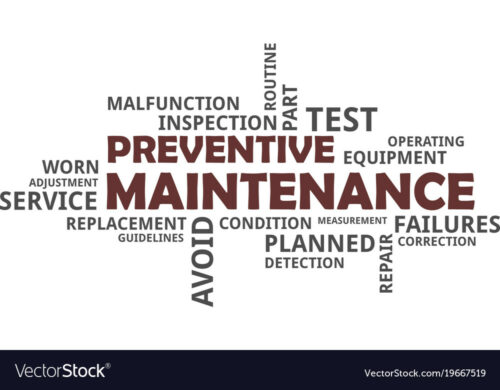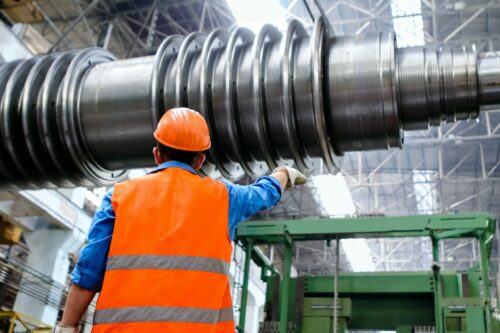Read on to discover our step-by-step guide to implementing a machine preventive maintenance program for your company or organization
Your department, sector, or company may currently be relying on reactive (or corrective) maintenance. The consequence of this is, without doubt, a loss of thousands of dollars every trimester because of interrupted workflow and downtime.
However, setting up a preventive maintenance schedule program is not as complex as you might imagine, once the right steps have been laid out clearly. In this article, you’ll learn how CMMS is useful in this transition from a reactive to a preventive maintenance plan.
Bear in mind that preventive maintenance is the best long-term strategy for avoiding sudden expenses, keeping stable operational costs, and improving the bottom line.
Reactive Maintenance vs. Preventive Maintenance
First and foremost, we need to establish a clear distinction between Reactive Maintenance and Preventive Maintenance. This will allow for a more accurate assessment of where things need to change in order to implement the new program.
Reactive maintenance is made up of tasks performed to rectify a fault in equipment or a system so it can be restored to an operational condition.
In even simpler language, something gets fixed only once it has broken.
A Preventative maintenance program is a series of actions taken on a scheduled basis to minimize problems that could affect the company’s productivity and performance.
A recent study by Jones Lang LaSalle concluded that a telecommunications company achieved 545% return on investment (ROI) after setting up a good preventive maintenance program.
Now that a definition of preventive maintenance has been cleared, let’s take a look at how a program can be easily set up.
Stage 1: Determine which assets to add to the preventive maintenance plan
If you are creating your first IT preventive maintenance plan, we recommend that you begin by scheduling maintenance tasks on your most critical assets.
Setting aside a couple of your organization’s most important assets will help indicate the value and good ROI. Furthermore, it will give you and your colleagues time to adapt to the new paradigm of preventive maintenance activities.
To determine which assets should be first to go in the equipment schedule, set out a few criteria, such as:
- Assets that are vital to the company’s success;
- Assets that require regular maintenance;
- High repair or replacement costs on the asset.
Generally speaking, choosing systems that require regular maintenance and have higher repair costs will offer the best ROI.
Estimate Your Return on Investment (ROI)
Once the selection is made, an estimate of how much annual savings will be made on each asset. The focus here is on ROI. Any company or organization can fix things once they are malfunctioning, but relatively few implement an annual preventive maintenance plan due to a lack of long-term visibility.
Therefore, it is advisable to look at assets where ROI will be most noticeable. List out the tasks required on these assets, along with their frequency.
Indeed, a company applying a preventive maintenance plan can expect to reduce costs by up to 70% compared to corrective measures.
Information gathering is key
In order to make an enlightened choice, you need to gather information from several sources, such as OEM, maintenance history, and feedback from technicians.
Firstly, the manufacturer manuals contain schedules necessary to do maintenance, as well as orientation on spare parts. Usually, they can provide valuable information starting from in-house testing and real-life testing by customers.
Maintenance history data comes in the form of a maintenance log, annotations, and archival maintenance data. With these, you can easily define preventive maintenance tasks and their frequency.
Because of their day-to-day experience with the systems, getting feedback from maintenance technicians will provide you with insights that written documents may not provide.
Stage 2: Create the Preventive Maintenance Plan
With all the information duly gathered and compiled, you should have all the preventive maintenance tasks listed out. Accordingly, this will give you a reasonable notion of the frequency needed to perform each task on the chosen assets.
Consequently, you can enter the data into a maintenance planning tool – likely, a CMMS – and begin assigning tasks to your coworkers. Switching to a preventive maintenance strategy will result in changes in their daily workflow.
We have the means to help you set up and streamline a new operation while making the entire process as seamless as possible. Eager adoption by your frontline teams is crucial for the long-term success of the plan. While initial reluctance may be encountered, it will be dissipated by our intuitive and bespoke dashboards and tools.
Stimulating enthusiasm in maintenance teams can be achieved by explaining how the switch will simplify their workflow, and benefit them in the long run.
Stage 3: Tracking and Adjusting the program
Try and avoid scheduling too much preventive work, or giving too much attention to assets. This will be a waste of time. But it’s a delicate balance to strike.
What if an asset experiences regular failures despite regular check-ups or preventive tasks? It is possible to schedule even more preventive work on it after you investigate what those breakdowns were and what caused them.
No initial plan will ever be perfect. As a result, you and your team will have to constantly adjust and tweak the maintenance plan based on the maintenance logs and feedback.
Being the most active participants, your technicians must stay motivated to complete maintenance tasks correctly and report on them precisely. This is the only way to get the most out of the program.
Stage 4: Expand the Preventive Maintenance Program to all your assets
Once you’ve established that the initial preventive maintenance plan provides significant ROI, start adding other assets to the program. This will certainly take time and a degree of adaptation by your workforce, therefore set a transition period to get into the flow.
The preventive maintenance strategy will need to be approved by management, so make sure implementation is coherent and complete before expanding.
Now, if you only have a handful of assets on your preventive maintenance schedule, it is possible to manage tasks without a CMMS.
However, if you use spreadsheets or email, you will have no real insight into all the data required for adequate maintenance. Your teams might miss schedules due to a lack of notifications, and completed work may have to be recorded manually.
Your objective is to improve the efficiency of maintenance operations. CMMS software is designed to simplify maintenance operations. It enables companies to automate, track and optimize all stages of the preventive maintenance plan.
In Conclusion
This guide should have provided you with some of the tools and orientation required to implement a comprehensive preventive maintenance plan, which will help you extend the life of your assets and reduce overall operating costs.


